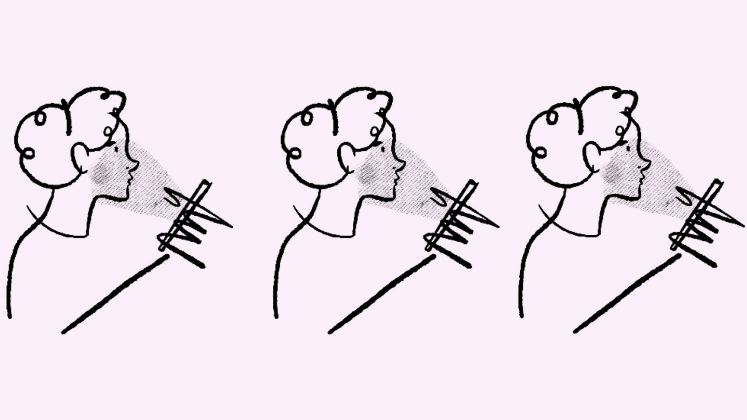It would be difficult to develop new ideas if everyone you associated with was hostile to them. The varying degrees of safety provided by the exclusion of people and ideas opposed to certain forms of knowledge is thus an often unacknowledged part of knowledge work. However, whilst this can be benign, it can also lead to the creation of entrenched and extreme positions impervious to outside influences, a state Katherine Furman introduces in this post as the epistemic bunker.
One reason that fake news and other troubling views gain traction is that they often come to us from people in our immediate social circles – from those we trust. A language around this has developed which describes the ways that groups filter out information in terms of echo chambers and epistemic bubbles. ‘Epistemic’ meaning here the ways in which knowledge is shared and acquired.
In epistemic bubbles we exclude information simply as part of the normal ways we live our lives – we watch certain shows, we read certain newspapers, we speak to certain friends – and so we miss out on things just because we don’t come into contact with them. But, when we encounter new information, we still believe it. Echo chambers are more pernicious. When their members encounter information that runs counter to their existing views, they double down on their pre-existing beliefs and actively discredit the news.
Having this terminology is helpful, because it allows us to see the ways that different groups filter out information. But, it doesn’t help us understand the social roles that these structures play, why they are created and why they persist. I propose that sometimes people participate in exclusionary epistemic structures because of safety concerns, either actual or perceived. In effect they are epistemic bunkers.
The idea of epistemic bunkers stems from ideas in development studies on bunkerisation. In this context, it describes the creation of literal fortified and often militarized compounds for international aid workers to live in while working in hostile environments, such as war zones. They are intended to provide safety from attack, kidnapping, disease, and other ills. But they come with an epistemic cost. Bunkerised aid workers do not have much contact with local communities, making them less able to understand the context. This can be crippling to intervention efforts.
sometimes people participate in exclusionary epistemic structures because of safety concerns, either actual or perceived. In effect they are epistemic bunkers.
Epistemic bunkers are similar. They are social epistemic structures that are designed to keep their members safe (sometimes emotionally, sometimes physically) in hostile epistemic environments. They boost the credibility of information from internal actors and diminish the credibility of those outside, sometimes blocking information from external actors entirely. Like their literal counterparts, epistemic bunkers can be more or less fortified, such that more or less external information can make it through. But, the epistemic activities within the bunker are not restricted to the passive receipt of information and associated filtering. Rather, the bunker is a secure zone in which members can participate in a variety of knowledge-related activities, such as questioning and discussing ideas relevant to the issues of the bunker. So, the individual within the bunker is more likely to accept information from fellow members, ask questions of them, and offer their own ideas in response.
Epistemic bunkers can be created with members of one’s physical communities, or they can be created virtually as online communities with shared interests and values. Bunkers can be created on a wide range of topics, interests, and commitments. Some are innocuous or even virtuous, others are troubling.
In an innocuous example, a 2019 study of vaccine-hesitant mothers (mothers who are uncertain about whether or not to vaccinate their children) in France found that many of the women in the study would trust a medical doctor on issues of vaccination, but only once they had been recommended by female friends or relatives. There is nothing especially troubling about mothers sharing information about where to get safe medical care.
The case of vaccine hesitancy also directs us to another feature of the epistemic bunker, which is that it can be ‘shallow’ or ‘deep’. A shallow bunker of vaccine hesitancy might be concerned with just wanting to find out more information about the vaccine and whether it safe for a parents’ own children. Or it can be deep, like vaccine sceptics who also endorse a conspiracy theory about autism and the MMR (Measles, Mumps, Rubella) vaccine. The consequence of the varying depths of bunkers is their relative penetrability. A bunker of vaccine hesitancy based on uncertainty about safety and risks might be resolved by conversations between the medical practitioners and parents, while a vaccine-hesitant bunker based on an underlying conspiracy would require taking on a broader network of beliefs about the pharmaceutical industry and disease causation.
In contrast to the innocuous example of vaccine hesitant mothers, Julia Ebner’s Going Dark documents how she went undercover in multiple right-wing extremist groups. It opens with a description of joining a secret online Neo-Nazi chatroom. She talks about how new members needed to answer a questionnaire and send in photographs of patches of skin to prove that they were white. The process she describes is one of entering an epistemic bunker, and the questionnaires and skin patch photos are examples of the fortifications that have been constructed to keep others out of the discussion space. In this instance, the epistemic bunker is a safe place for Neo-Nazis to have racist conversations. Once in the bunker, there are further fortifications in place to exclude outsiders who might have made it through the initial entry procedure. For instance, conversations are often coded and make use of metaphors that are only understandable to those who are already very familiar with Neo-Nazi literature and doctrine. This case is decidedly more troubling than mothers sharing information about trustworthy doctors.
Like their literal counterparts, epistemic bunkers may offer their members safety, but they come with an epistemic cost. In an obvious sense, members of epistemic bunkers lose out on information that they may have encountered outside the bunker. There is also evidence that members of exclusionary structures, like epistemic bunkers, may be nudged towards more extreme views than those they began with.
given that bunkers are motivated by safety concerns, interventions that focus on taking hostility down a notch are more likely to succeed
Given the wide variety of types and topics of epistemic bunkers, there are no silver-bullet interventions that policy makers can use to dismantle epistemic bunkers. But, given that bunkers are motivated by safety concerns, interventions that focus on taking hostility down a notch are more likely to succeed.
Where effective steps have been taken, they have involved making sure that individuals felt safe speaking their minds and asking questions. In medical contexts, community health workers have been helpful. These are members of communities, who are not credentialed medical professionals, but receive training on specific topics and small stipends. They are then able to act as intermediaries between medical institutions and communities. Given their insider-status in the community, they are able to have conversations that would be inaccessible to an outsider.
On broader social issues, an encouraging example is the Irish Citizens’ Assembly established in 2016. These involved small managed group discussions, where people talked about controversial issues, such as abortion laws. Here, individuals from very different backgrounds were intentionally brought together, but the structured nature of the interaction contributed to sense that it was okay to have conversations on tough topics.
While community health workers and citizens’ assemblies provide us with a sense of how policy makers might proceed, reader be warned, some bunkers will never be breached.
This post draws on the author’s article, Epistemic Bunkers, published in Social Epistemology.
The content generated on this blog is for information purposes only. This Article gives the views and opinions of the authors and does not reflect the views and opinions of the Impact of Social Science blog (the blog), nor of the London School of Economics and Political Science. Please review our comments policy if you have any concerns on posting a comment below.
Image Credit: Lukáš Lehotský via Unsplash.









1 Comments